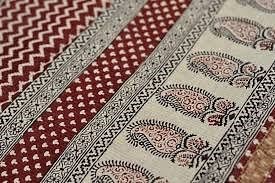Free Courses Sale ends Soon, Get It Now


Free Courses Sale ends Soon, Get It Now



Disclaimer: Copyright infringement not intended.
Context
|
Safe Tourist Places for Women project This project, operated with Nirbhaya Fund, launched jointly by Madhya Pradesh Tourism Board and District Administration Dhar. With an Objective that every woman should feel safe at the tourist places, the women and girls trained in self defence to give their services in the tourist sites of the district. It makes tourism destination safe for Women in Madhya Pradesh through awareness, education, training & employment. |
Details
Bagh Prints of Madhya Pradesh
What is Geographical Indication?
Benefits of GI Tags
Total GI Tag in India
|
PRACTICE QUESTION Consider the below statements about GI tags in India: 1. Only Handicraft products are eligible to be registered under GI act of 1999. 2. The first product to get GI tag was Darjeeling tea. 3. It is awarded for 15 years initially. Which of the above statements is/are incorrect? a) 1 and 2 only b) 2 and 3 only c) 1 and 3 only d) 1, 2 and 3 Correct Answer: (c) |
© 2024 iasgyan. All right reserved